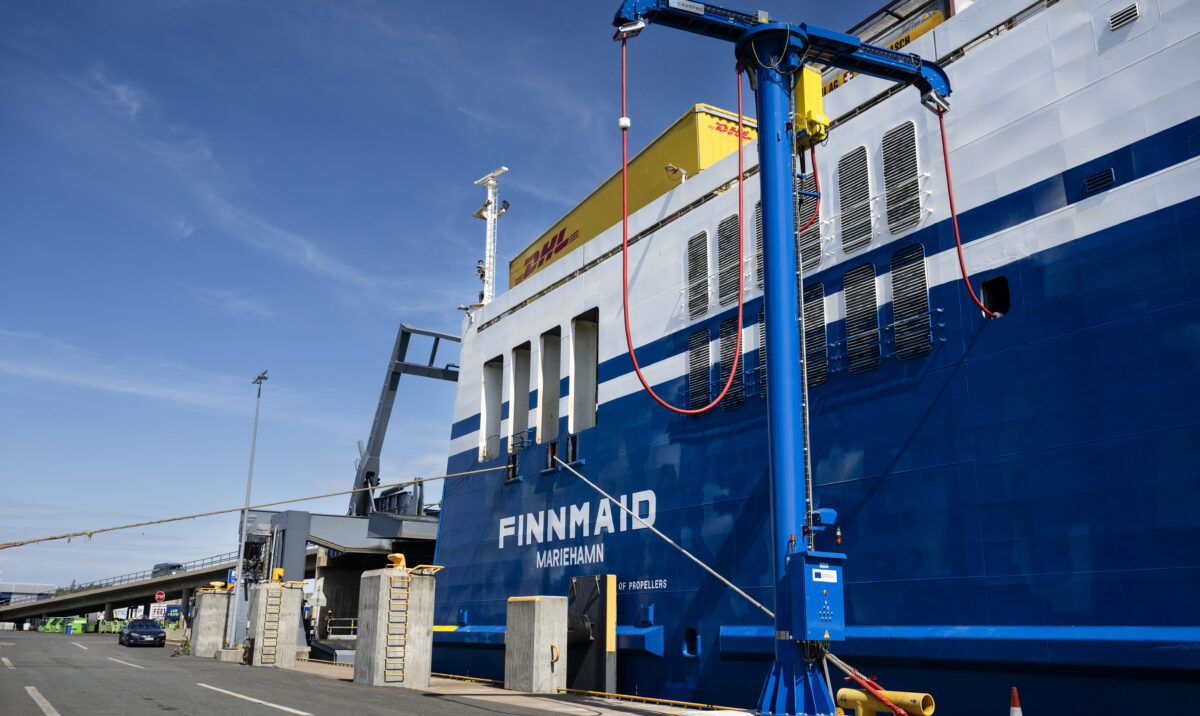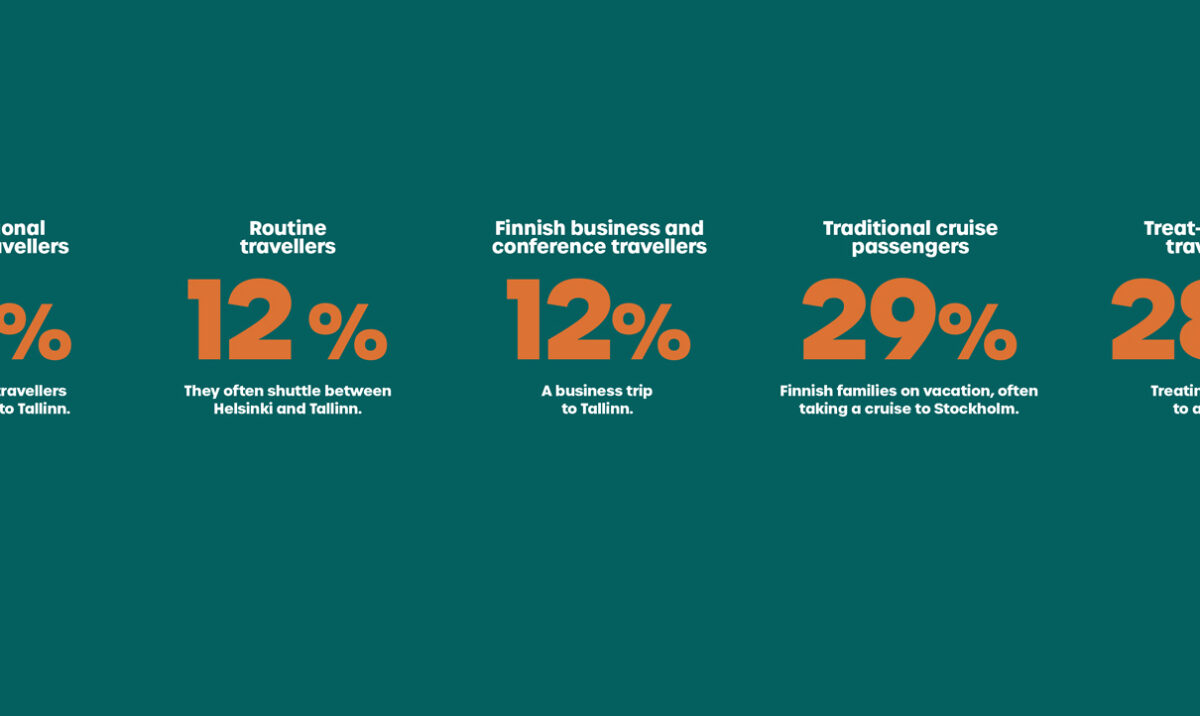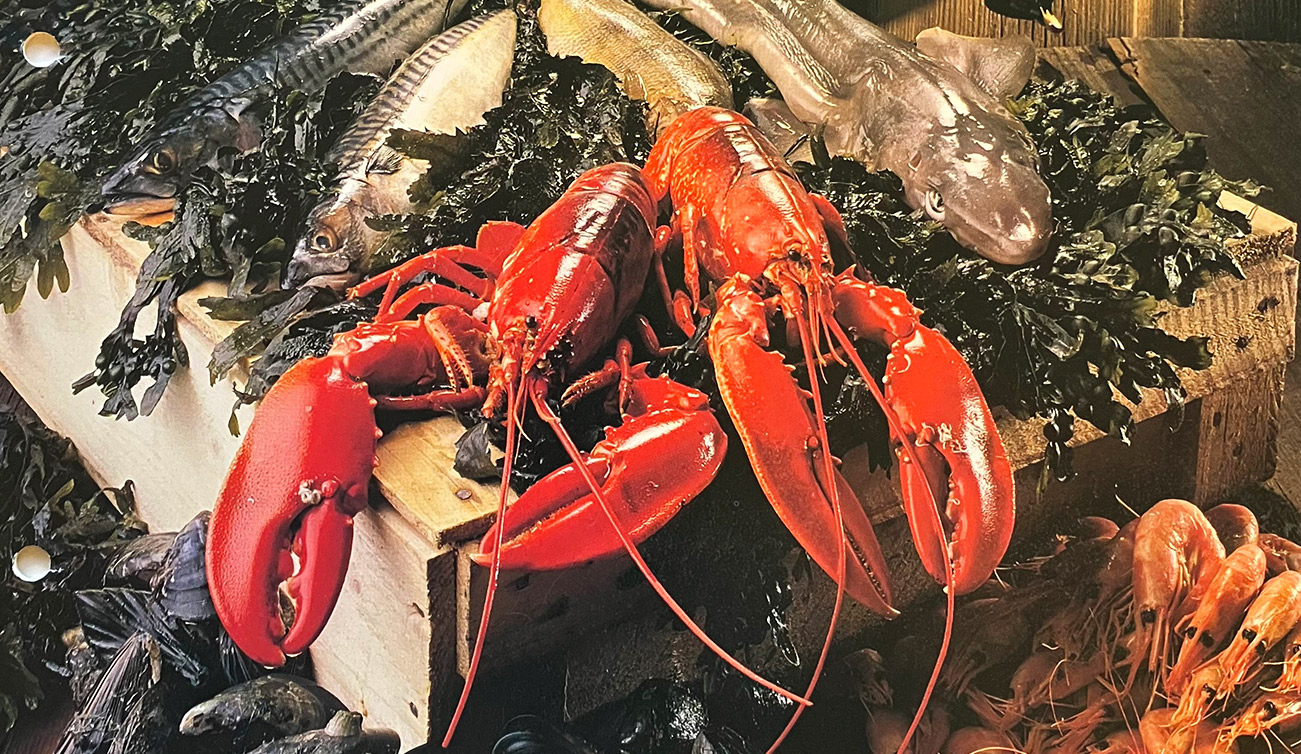
Finland-Sweden cruise ferries introduced us to new tastes
Since the earliest days of the ferries, food has been one of the main enticements for taking a sea voyage – alongside tax-free shopping.
During the 1950s–1980s, ships benefited from Finnish import controls, as they were allowed to source provisions – that is, ingredients for their restaurants – from Sweden. Ships therefore served many delicacies that could not be imported to the mainland. In the early decades, passengers mainly enjoyed cold buffets, with à la carte only becoming popular in the late 1980s.
Many people tasted new delicacies for the first time aboard the ships that cruise between Finland and Sweden. This occasionally gave rise to some comic situations. For example, some people ate prawns whole – complete with their shells – before staff could guide them through the peeling process. Fresh prawns from Stockholm were often smoked just before being loaded into a ship’s cold room. So even today, feasting on a prawn sandwich is still an important part of the cruise for many older passengers.
In the 1960s–70s, roe was another new delicacy that passengers shovelled down by the bucketload. The best available ingredients were purchased for the cruise ferries. And if something couldn’t be found in Finland, it would be sourced from Sweden or flown in from farther afield.
For example, according to chef Jari Merinen, who worked on a number of different ships, foie gras was regularly flown in for M/S Finlandia. Chefs from onshore restaurants could only marvel at what was being served on the ferries, as Finland strictly prohibited the import of many ingredients during the 1960s–1980s.
Provisions from Swedish shops
In 1986, ships were serving appetizers such as Russian caviar, dove paté, asparagus salad and snails in garlic butter. Patés and other similar products were made in the ship’s own kitchen, as they used to employ significantly more staff than they do today. When a particular ingredient was required, the suppliers would make their rounds of Stockholm’s grocery stores. These suppliers gradually became popular customers in Stockholm stores, as they might buy dozens of jars of foie gras at a time.
Ships served many delicacies that could not be imported to the mainland.
Thanks to these “ship’s provisions”, Finns also became acquainted with Swedish cuisine and restaurants. Back in the 1960s–1980s, Swedish and Finnish food cultures were still quite different, as Swedes had always had better access to a broader variety of ingredients. The proximity of the Atlantic brought oceanic delicacies, such as sole, to Swedish dining tables. When sole became available in Finland, it was initially the preserve of fancy Helsinki restaurants and à la carte menus on ships.
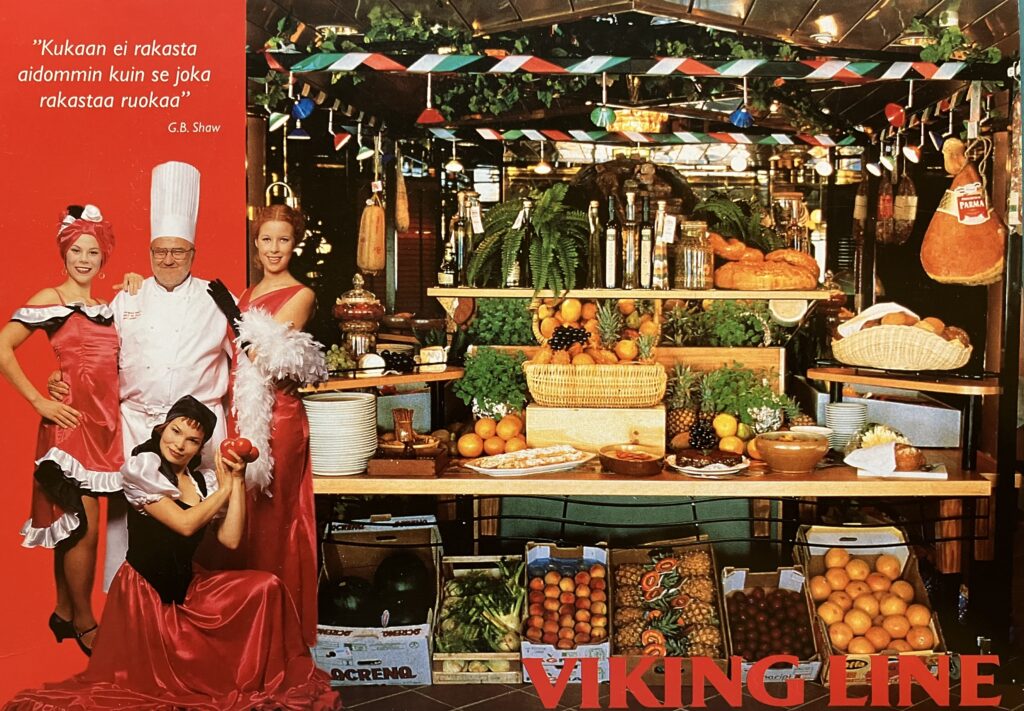
Back then, ships still employed so many staff that dishes such as patés were made inhouse. Fish were always delivered whole, and even herrings were cleaned and gutted on board. Salmon was smoked in ship kitchens until the 1970s. Fish and seafood buffets included lobster, roe and a variety of shellfish. At the turn of the 1960s–70s, oysters were purchased from Stockholm and 60–80 live lobsters were flown in from the USA once a week. They were not on the ship’s menu – the maître d’ recommended them to customers.
When the import of vegetables was restricted in Finland during the spring, ships were free to acquire them from Sweden, where there was plenty of fresh produce available. This continues to some extent today, as Sweden still offers better selections and cheaper prices. As late as the 1980s, strawberries, blueberries and currants were being purchased from Sweden during the winter, as they weren’t available in Finland. Nowadays, seasonal produce is not such a big selling point, as everything is available all year round.
Theme weeks showcased the wonders of the world
Silja Line held its first theme weeks in autumn 1978. These seafood weeks astonished both passengers and personnel alike. They were a bit lacklustre in terms of success, but the followups fared a lot better. Staff were trained to sell lobster, monkfish, oysters, mussels, scampi and other seafood.
During the theme weeks, passengers learned that the ferries provided an opportunity to try delicacies that couldn’t be found anywhere else. In January of the following year, it was time for the Russian weeks, followed by the equally popular Hungarian weeks, when the food was accompanied by a colourful puszta atmosphere: a Romani orchestra, visiting chefs, hostesses in national costume, red-white-and-green decorations, and Hungarian garlands.
The American conquest came next in the form of a major three-part project in spring 1984. Silja sent a team of six people to America, where they spent twelve days exploring food and restaurants in five cities – and brought American delicacies home for Finns to enjoy. According to the book Siljan Gourmet (Silja’s Gourmet), passengers fell in love with prime rib steak, of which 110 kilos had been acquired directly from America. It was so tender that their knives sliced through it like butter. The T-bone steaks weighed almost half a kilo and were served Texan-style with corn, grilled tomatoes and baked potatoes.
For the Mediterranean weeks, the Silja team went on a fact-finding tour of Italy, Greece and Spain. And it wasn’t just the à la carte menu that was given the theme-week treatment. Appropriate delicacies were also added to the cold buffet, and meals were accompanied by wines from the countries in question.
Paul Bocusé cooked on Silja Wellamo
Sales of food were so high during theme weeks that top chefs from around the world were brought in to cook on the cruise ferries. They included the French master chef Paul Bocusé, who came in person to add the final polish to dishes for Silja Line’s M/S Wellamo and ferries on the Turku route.
Silja’s kitchen staff also visited Bocusé’s restaurant in Collonges sur Mer to study the culinary arts. All of the ingredients for the French weeks – from veal to truffles – came from France. Notable French chefs often had their own peculiar habits. Even though the chefs had done all the initial preparations themselves the night before, by morning they could sometimes no longer remember the recipe and all the ready-prepared food had to be thrown in the bin and everything was begun again from scratch.
Other well-known culinary influencers who visited the ships’ kitchens include the French Christel Aurell, who established his own restaurant school, and the Swede Gert Klötzke, a long-time coach of Finland’s National Culinary Team. The crew also picked up their teachings, which raised the professional pride of the ships’ kitchens.
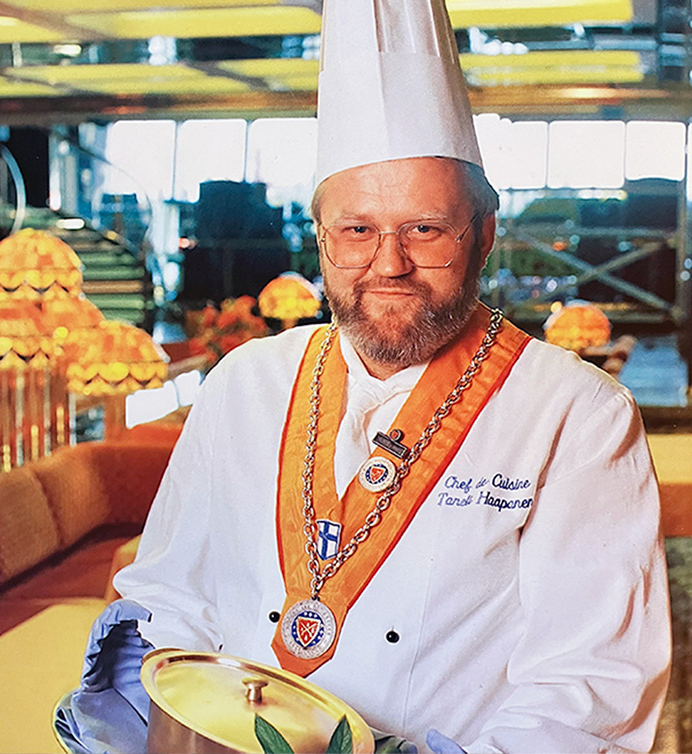
The theme weeks evolved over the decades, and passengers were enticed with very exotic ingredients. For example, springbok, camel and alligator were all imported for the ships during the 1990s, when they weren’t available anywhere else in Finland except at a restaurant called Salud in Tampere. The onshore restaurants closely monitored what was going on aboard the ships, and popular themes were also copied on land whenever possible.
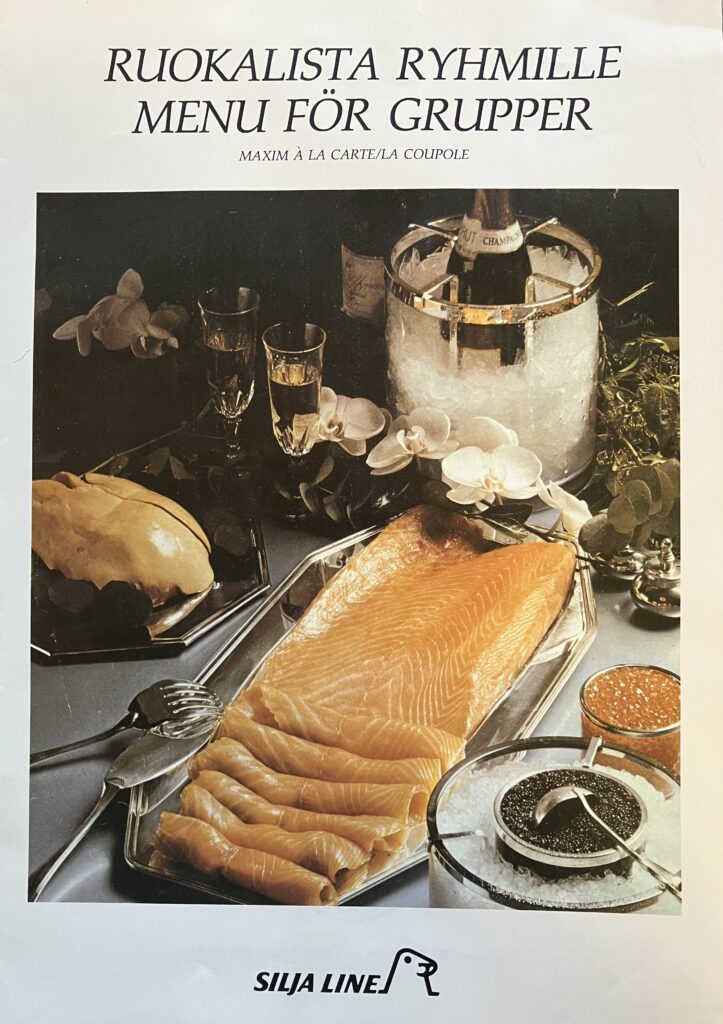
Source: Kari Martiala-Helena Lylyharju’s history of Finnish gastronomy: Parasta pöytään – suomalaisen gastronomian historia (Gummerus 2017)




